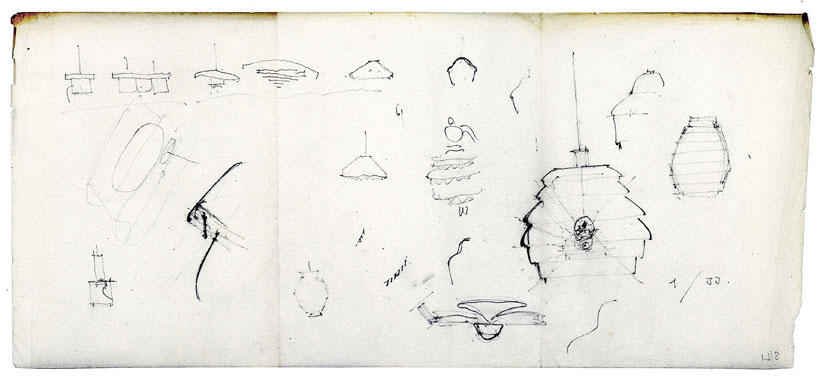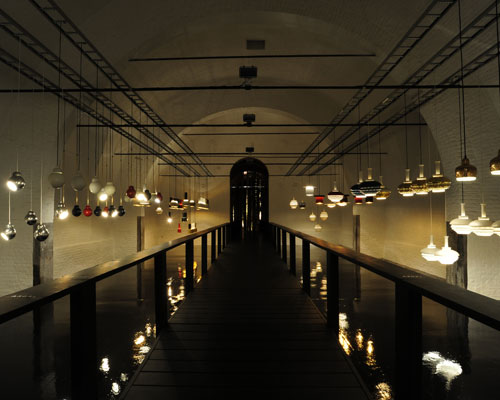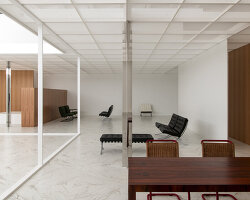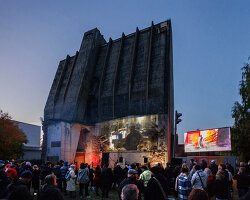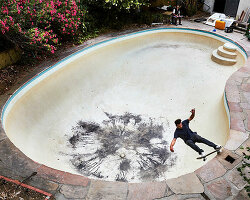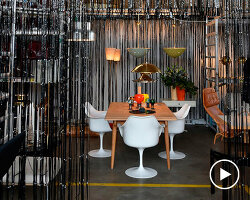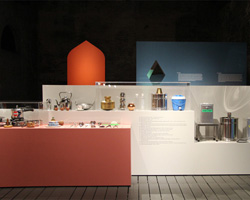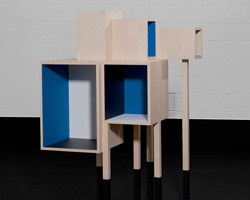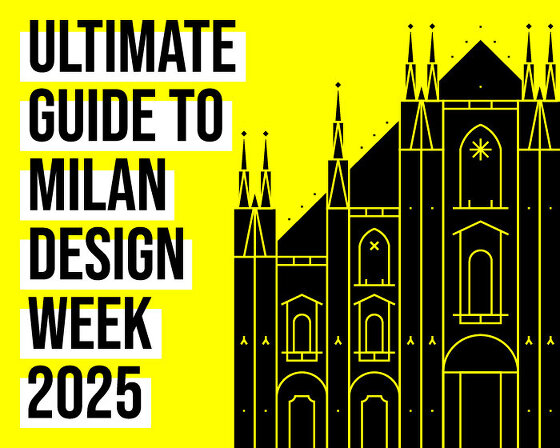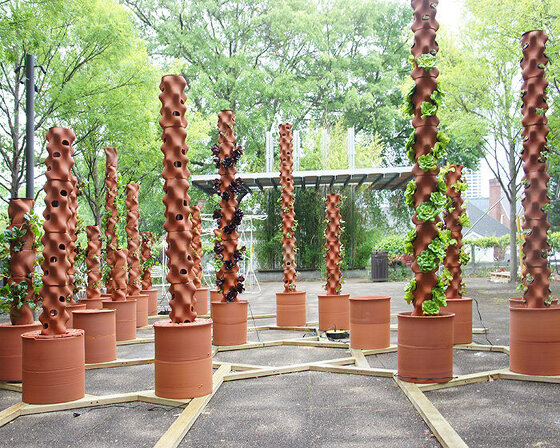a pioneer of organic design and an iconic figure of scandinavian architecture, alvar aalto has been an inexhaustible source of influence for subsequent generations. embracing all art forms and disciplines, aalto’s work in the architectural field — enriched by the use of natural forms and materials and increasing freedom in the handling of space — is perhaps most widely known; yet his projects in furniture and lighting also combine practicality, aesthetics and series production, while encouraging his idea of a more beautiful everyday life within the home. generally designed as part of a broader architectural scheme, aalto’s luminaires stand the test of time and comprise the creative thoughts of a man who was constantly striving towards a more human built environment. the solutions that he developed aspired to a general sense of well being by promoting the social and even therapeutic benefits of light.
opening its doors on february 9th, 2014, the ‘lightings’ exhibition at the grand-hornu in belgium showcases a expansive collection from the finnish designer’s oeuvre, comprising 100 lamps. the catalog of work highlights aalto’s command of the sculptural form, his attention to aesthetic detailing and the artistic value inherent in these combined elements.
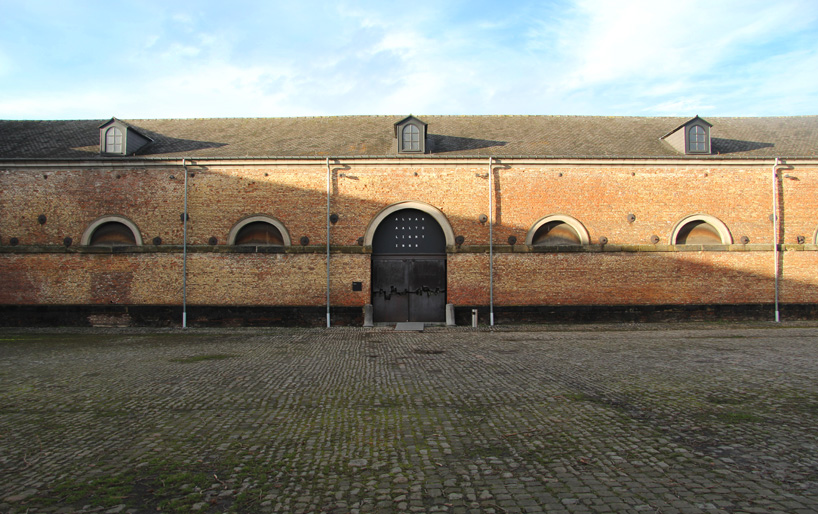
the exterior of the exhibition space at the grand-hornu, belgium
image © designboom | first photo © grand-hornu images / michel de cubber
dealing with a period from the late 1920s to the 50s, the exhibition is divided into two sections. the first is an installation, a walk across a wooden bridge hovering just above water, in which aalto’s creations reflect their light below. the chiarascuro contrasts the reflections, in an experience to remind viewers of the importance of nature he developed into his design. in the second part of the exhibition, reproductions of archive documents, photos and drawings describe the genesis of aalto’s lights, their mechanics and their intrinsic links with architecture.
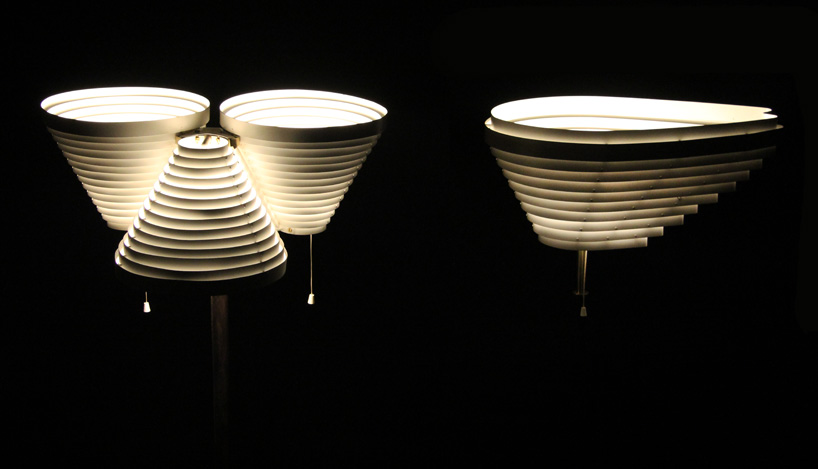 A809 beside A805 | image © designboom
A809 beside A805 | image © designboom
in 1935, aalto and his wife aino, with maire gullichsen and nils-gustav hahl, founded artek, a company which promoted the growing sales and production of aalto’s furniture and lighting designs. the business idea of the company was ‘to sell furniture and to promote a modern culture of habitation by exhibitions and other educational means.’ advocating a new kind of environment for everyday life. the items’ combination of aesthetics and functionality, combined with series production, was at the core of artek’s main idea, encouraging the home to be a beautiful place for everyone.
 ‘enkelinsiipi’ or ‘angel wing’ lamp | image © designboom
‘enkelinsiipi’ or ‘angel wing’ lamp | image © designboom
the A805 ‘enkelinsiipi’ or ‘angel wing’ lamp, with its incredibly architectural design, was origanlly made for the national pensions institute in helsinki in 1955. this model was then commonly used in the corridors of administrative and financial buildings. the light that filters through the hand-rivited steel shade slats and the resulting shadows it casts on the walls that surround it was a source of reference for its namesake.

A809 with three shades | image © designboom
a variation of the A805 model, the A809 designed in 1950 has three shades and was created for the living room of the maison louis carre in france. the different permutations of the shades are the result of work on the reflection using fanned out slats developed by aalto in his architectural practice.
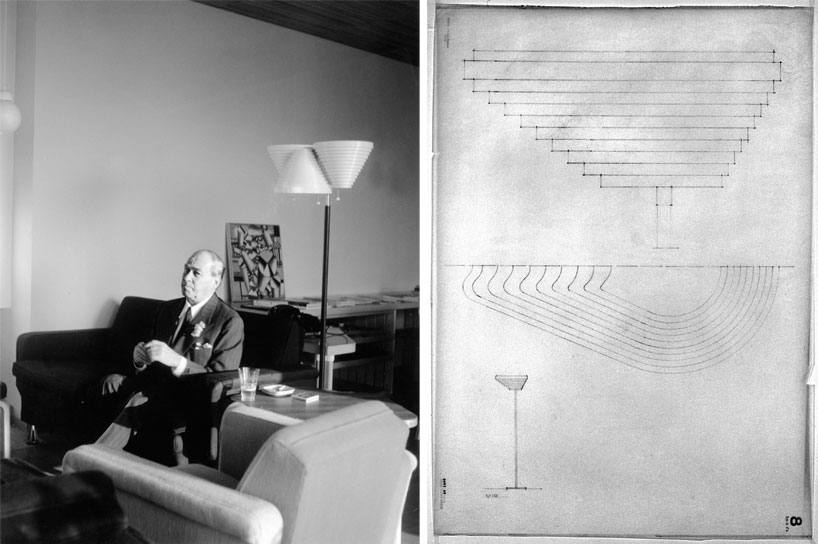 (left) AA003 — alvar aalto in maison louis carré (1958-59, 1961) living room on october 14, 1959
(left) AA003 — alvar aalto in maison louis carré (1958-59, 1961) living room on october 14, 1959
photo © alvar aalto museum
(right) working drawing of the ‘angel wing’

‘A331/A332’ nicknamed the ‘beehive’ | image © designboom
inspired by the research into perfect lighting carried out by the danish architect and designer poul henningsen, the ‘beehive’ features either five of six reflecting metal slats reduced to a purely aesthetic function. this sculptural luminaire was created in 1953 for the interior of the university in jyvaskyla. this city where aalto grew up, is home to more buildings designed by him than any other in the world. the two variations are producted in either black or white.
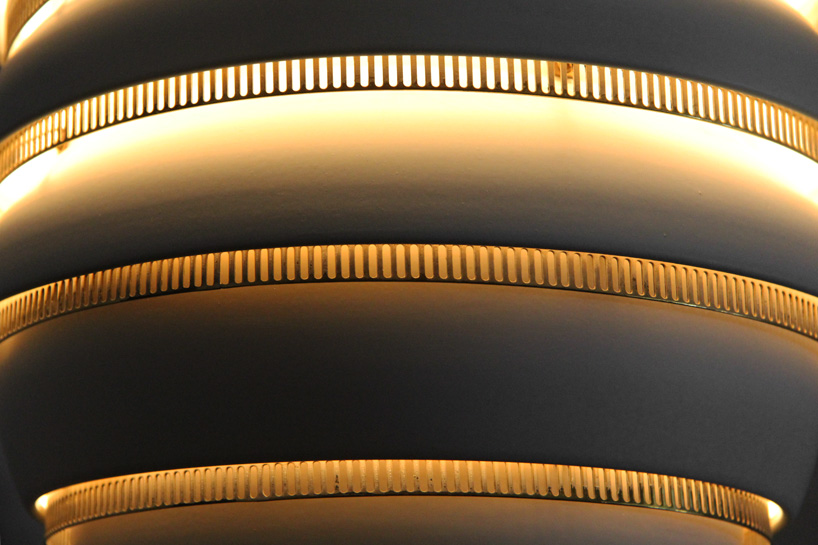 detail of the ‘beehive’ | image © designboom
detail of the ‘beehive’ | image © designboom
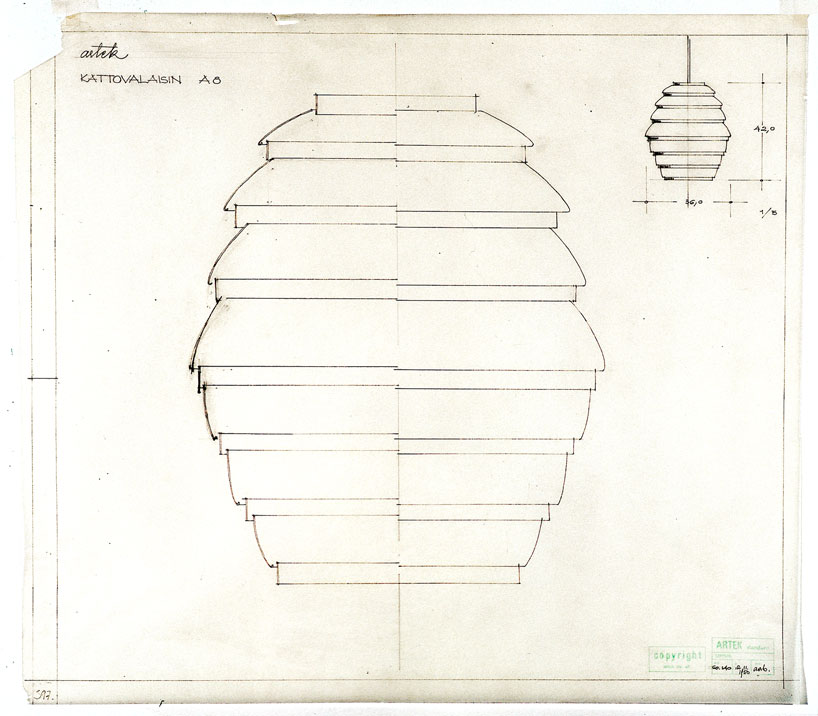 working drawings of the ‘beehive’ lighting
working drawings of the ‘beehive’ lighting
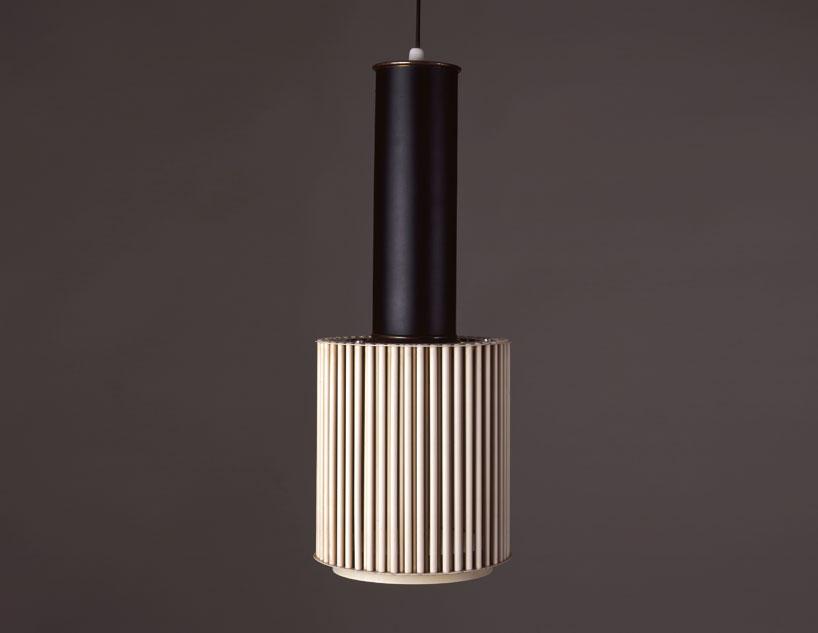 alvar aalto, hand grenade, A110 (1952) | photo © maija holma, alvar aalto museum
alvar aalto, hand grenade, A110 (1952) | photo © maija holma, alvar aalto museum
variations of the ‘hand grenade’ light — A110 and A111 — are named due to its aesthetic similarities to the german weapon designed during world war I. the lamp sheds it light downwards, like a spotlight. conceived in 1952 for the finnish association of engineers building as well as the council chamber of saynatsalo town hall — both of which are aalto’s constructions — the lacquered metal dual cylindrical form is appealing in terms of texture and technicality. an additional variation, not masses produced, features an organic opening from which light boundlessly flows at the base of the cylinder.
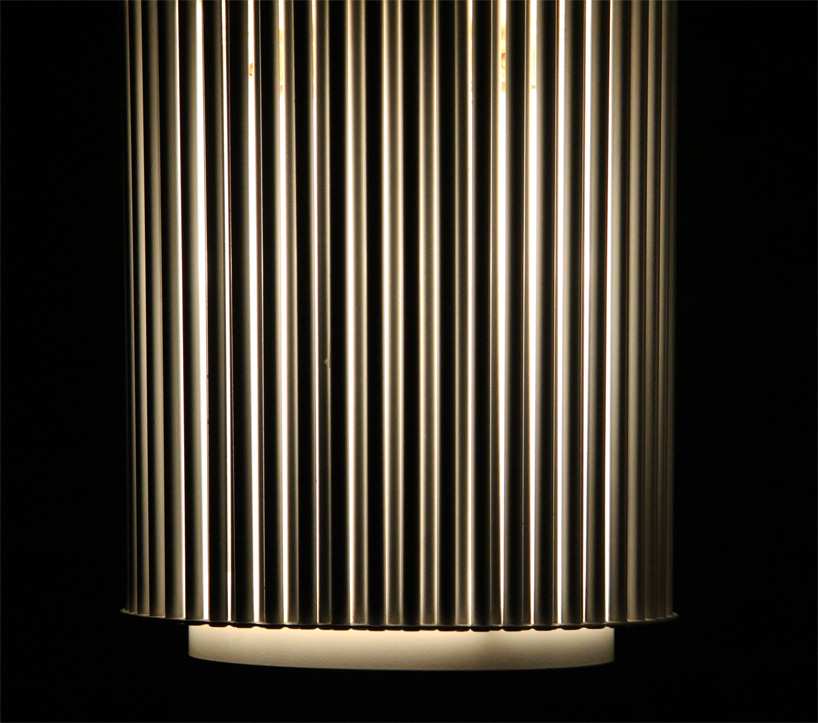 detail of ‘hand grenade’ | image © designboom
detail of ‘hand grenade’ | image © designboom
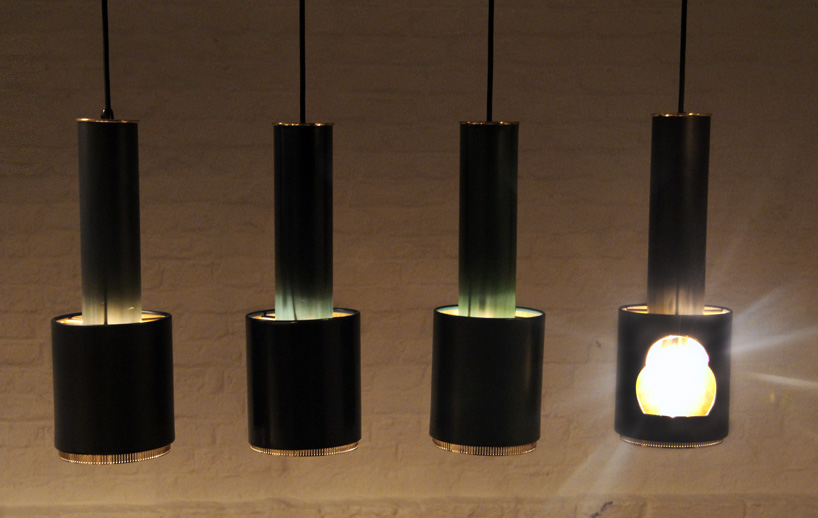 ‘hand grenade’ variation | image © designboom
‘hand grenade’ variation | image © designboom

‘hand grenade’ variation detail | image © designboom
in the second half of the exhibition, deep boxes provide a window into aalto’s renowned architectural and industrial works like the functional and unfussy savoy restaurant designed by him and his wife aino in 1936 and the imposing yet humanistic paimio sanatorium of 1933. each volume encompasses a various project, projecting a glimpse into the genesis of his ideas and the spectacular attention to detail built into each composition.
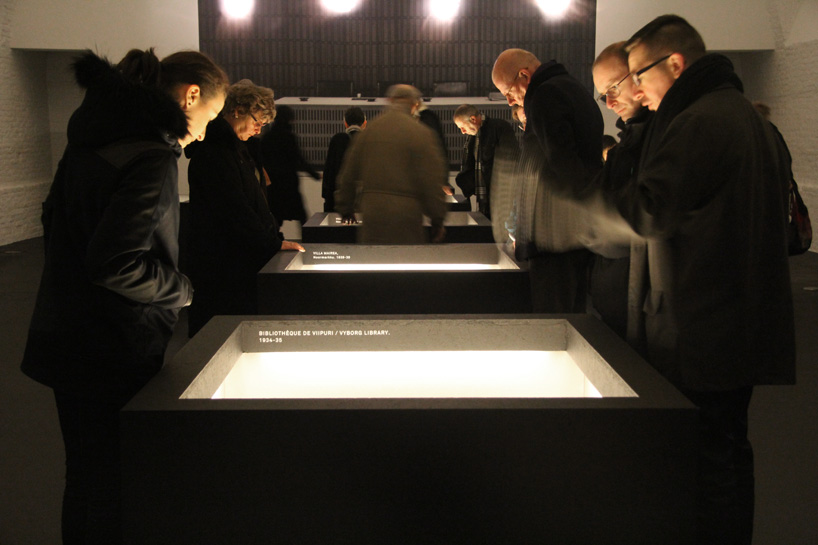
viewers at the ‘lightings’ exhibition peer into the volumes | image © designboom
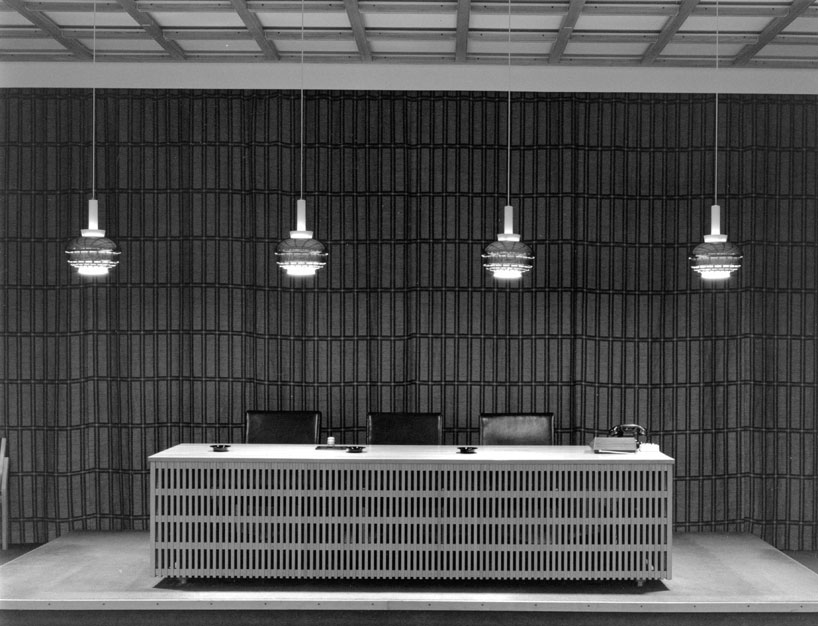 national pensions institute (1948, 1953-57), meeting room 1979
national pensions institute (1948, 1953-57), meeting room 1979
pendant lamps A335 (1950s) above the table
photo © martti kapanen, alvar aalto museum

inside the viewing box are archives collected from aalto | image © designboom
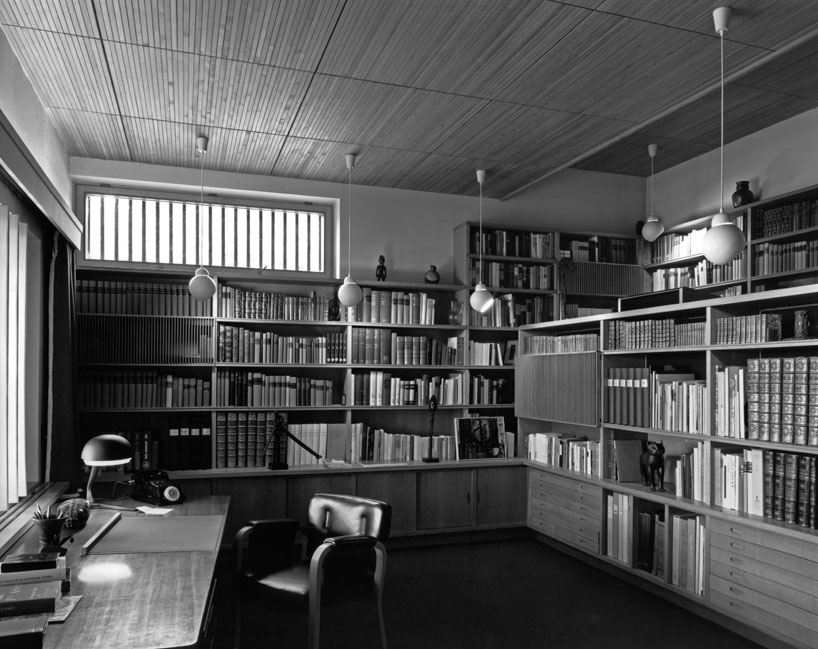 maison louis carré (1958-59, 1961) library in 1965 | photo © alvar aalto museum
maison louis carré (1958-59, 1961) library in 1965 | photo © alvar aalto museum
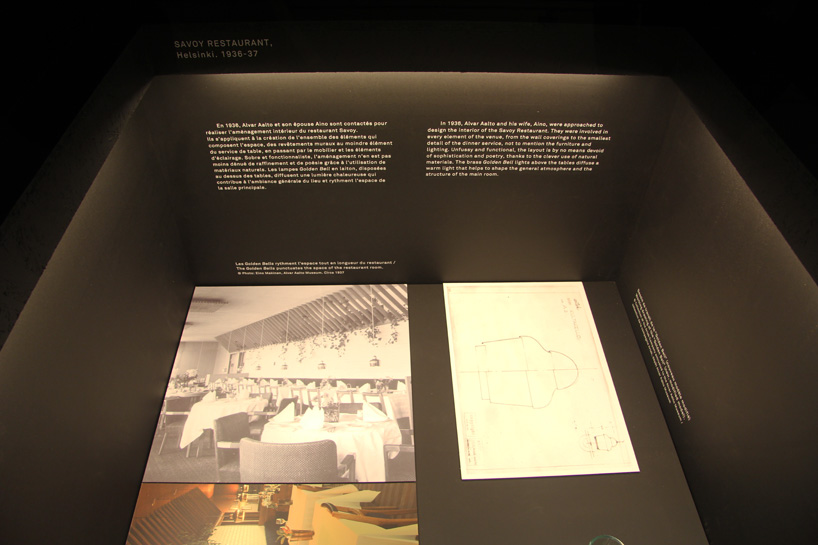 the savoy restaurant highlighted within a viewing box | image © designboom
the savoy restaurant highlighted within a viewing box | image © designboom













